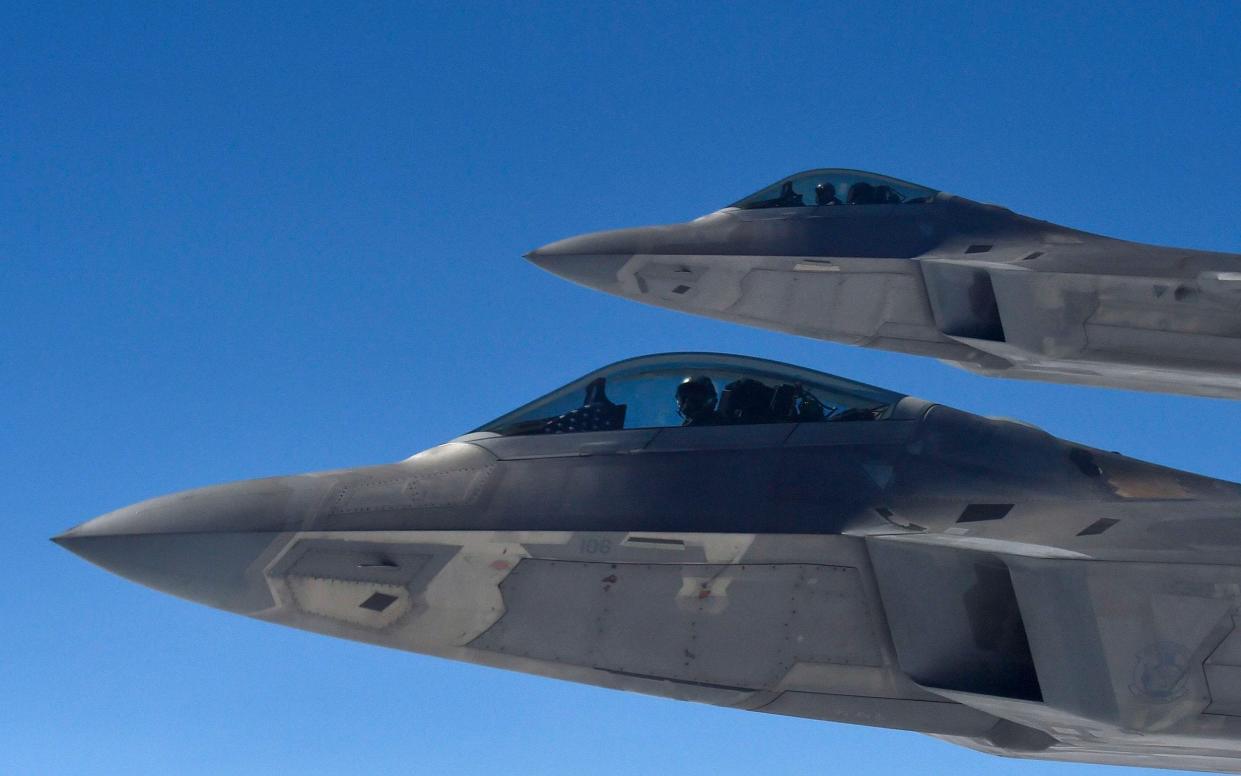The US Air Force seems hell-bent on getting rid of its greatest ever fighter jet

The US Air Force has been in an unseemly hurry to rid itself of its Lockheed Martin F-22 Raptor stealth fighters. Its argument: the 32 least-upgraded Block 20 versions of the supersonic, fifth-generation stealth fighter aren’t suitable for combat – and together cost nearly half a billion dollars a year to maintain.
The F-22 is the most capable, most advanced fighter jet in US service. It’s probably the greatest fighter plane built so far. But keeping the older F-22s in service is prohibitively expensive while the Air Force is struggling to pay for an array of new capabilities, including new fighters, bombers, radar planes, drones, satellites and nuclear-tipped ballistic missiles. At least, that’s the Air Force’s argument.
But the planned divestment of the nearly 30-year-old Block 20 F-22s would kneecap the Raptor force, according to a new report from the US Government Accountability Office. For now, the US Congress agrees. It has barred the Air Force from eliminating any F-22s for at least a few years.
That’s because the Block 20s are training jets. Without them, the Air Force would have to assign some of its upgraded Block 30/35 F-22s – which have improved sensors and weapons – to training tasks. The end result would be a deep cut in the number of F-22s available for combat.
“The Air Force did not document how it will conduct F-22 training or testing – the current Block 20 functions – without Block 20 aircraft,” the GAO noted. “It also did not document the challenges that combat units may face if mission-ready Block 30/35 aircraft are used for training or testing instead of Block 20s.”
Today there are 150 combat-capable Block 30/35s. If and when the Air Force parks the Block 20s, there would be just 129 combat-capable Block 30/35s. The rest of the active F-22s would be assigned to training or testing.
On the tarmac with the six front-line squadrons that fly F-22s – five in the active Air Force, one in the Air National Guard – the situation would be even more dire. With its sophisticated sensors and delicate radar-absorbing coating, the F-22 is a finicky and maintenance-hungry machine. According to the GAO, a squadron needs 24 jets to ensure 12 jets are available to fly on any given day.
So in practice, there aren’t 150 combat-ready F-22s. There are 75. Retiring the Block 20s would reduce that number to 64 or 65 – a frighteningly small number given the huge responsibility the Raptor squadrons shoulder. The Air Force, and indeed the entire US military and the militaries of America’s closest allies, count on that tiny force of F-22s to lead the fight for control of the air in a major war with, say, China.
Given the stakes, the Air Force should be extremely careful about grounding a single F-22 – to say nothing of grounding more than 30 of them. Especially considering that the F-22’s notional replacement, the Next Generation Air Dominance fighter, is on the budgetary chopping block starting in 2026.
If the Air Force and the US Congress don’t find a way to pay for the NGAD program and Congress lets the Air Force retire 32 older F-22s, the Air Force could soon find itself in a dangerous position: with a need to wrest control of the air from a growing and modernizing Chinese air force with a shrinking and aging fleet of F-22s – and with no help on the horizon for potentially decades to come.
Incredibly, those 32 older Block 20s aren’t the only fighters the Air Force wants to retire early. The service also wants to cut half of its Boeing F-15E Strike Eagle fighter-bombers while simultaneously reducing the number of new F-15EXs it buys.
The cuts might be less worrying if the Air Force’s other in-production fighter, the Lockheed Martin F-35 Lightning II, weren’t such a disaster. The Air Force is decades behind and hundreds of billions of dollars over-budget compared to its original plan to acquire more than 1,700 F-35s – and hasn’t taken delivery of a new F-35 in a year as it waits for testers to work out kinks in the fighter’s latest software build.
The Air Force is in a fighter crisis. But it’s not going to solve that crisis by grounding training jets – and shrinking an air-superiority force that’s probably already far too small.

 Yahoo News
Yahoo News 
